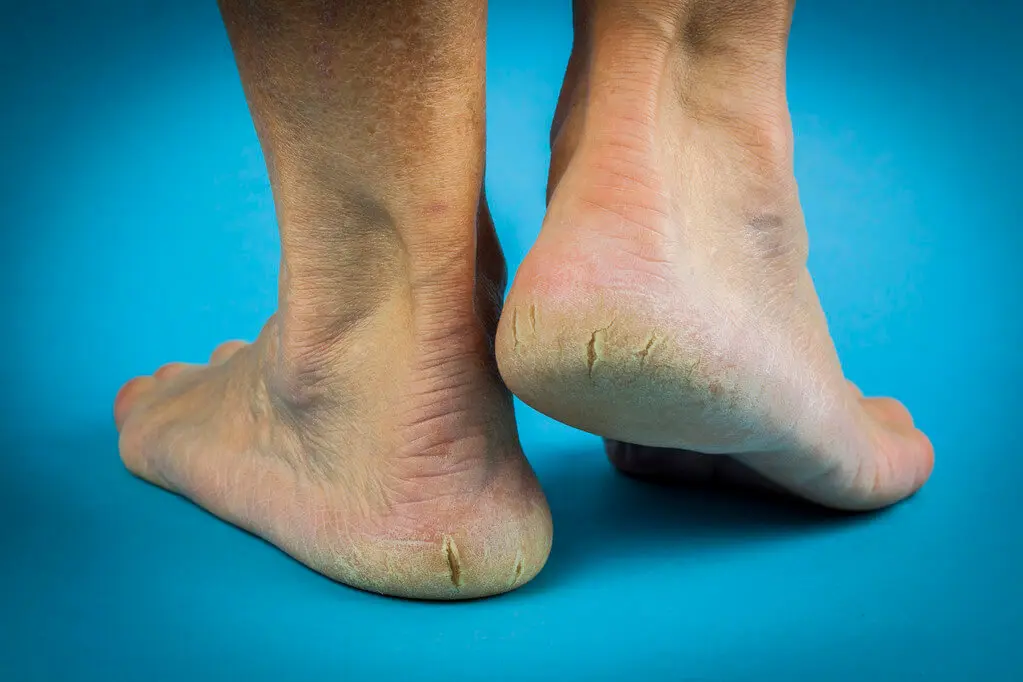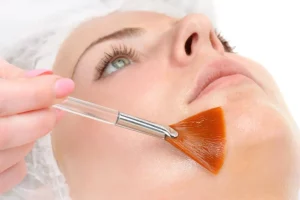Going Nuts for Smooth Feet
Nuts are not only delicious to snack on but also have numerous benefits for smooth feet. When it comes to natural remedies for rough skin, nuts are often recommended due to their rich nutritional profile and unique properties.
Packed with vitamins, minerals, and essential fatty acids, nuts offer a variety of nutrients that promote healthy skin. Whether consumed as a dietary source or used topically, nuts can help improve skin hydration, maintain a protective barrier, and exfoliate dead skin cells.
Here we will explore other wonderful natural remedies for achieving smooth and beautiful feet.
Overview of Rough Skin
Rough skin, particularly on the feet, is a common problem affecting many individuals. It is characterized by a dry and coarse texture, often accompanied by flaky or scaly patches. Common symptoms of rough skin include redness, itchiness, and cracked heels.
Addressing rough skin is crucial to maintaining overall skin health. When the skin’s natural barrier function is compromised, it can lead to further complications. For instance, the rough skin can become more prone to bacterial infections or fungal infections.
Also, when the skin becomes dry and lacks moisture, it can result in skin conditions such as atopic dermatitis or seborrheic dermatitis. In some cases, rough skin may be an indicator of nutritional deficiencies or underlying medical conditions.
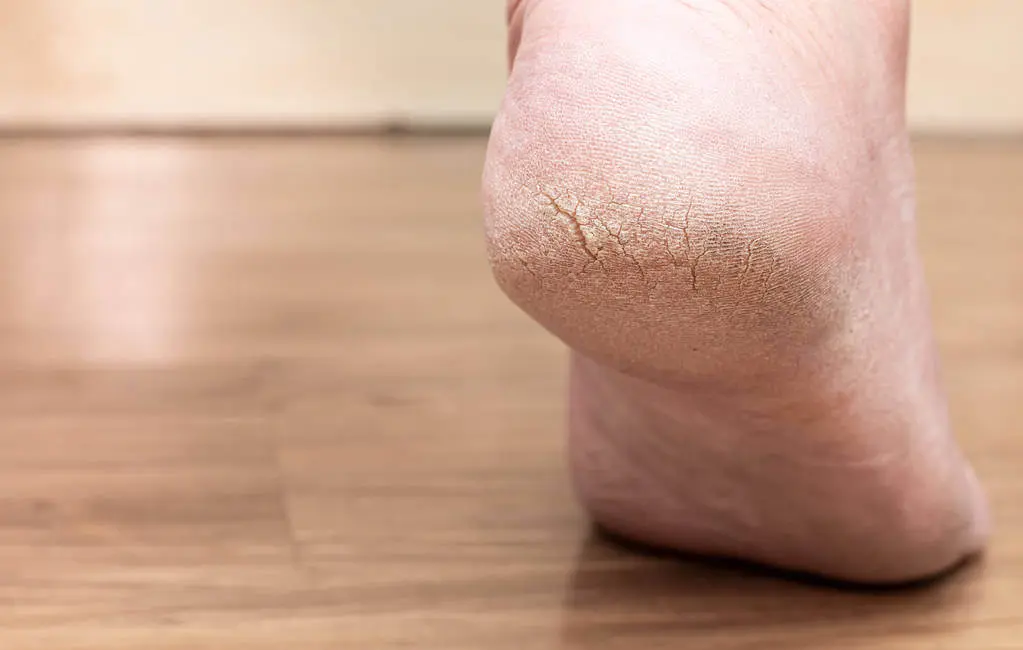
To improve and maintain healthy skin, it is important to prioritize proper skincare. Regular exfoliation can help remove dead skin cells and promote skin hydration. Using a foot scrub or a gentle foot file can help smooth the rough skin on the feet.
Additionally, applying natural moisturizers like coconut oil or jojoba oil can provide hydration and nourishment to the skin. Wearing cotton socks and avoiding harsh soaps can also aid in preserving the skin’s natural moisture.
Causes of Rough Skin
Several factors can contribute to the development of rough skin:
Dry Skin
Dry skin is a common condition that occurs when the skin doesn’t retain enough moisture, leading to dehydration and roughness. It can affect any part of the body, including the feet. When the skin becomes too dry, it can crack and cause discomfort, particularly in the heels.
Medical Conditions
Medical conditions can have a significant impact on the health and appearance of our skin, including the skin on our feet. Certain conditions can lead to dryness, itchiness, and roughness, making it essential to address them to maintain smooth and healthy feet.
Dermatitis
One such condition is atopic dermatitis, also known as eczema. This chronic inflammatory skin condition can cause intense itching, redness, and flakiness. Atopic dermatitis is often characterized by an impaired skin barrier, which leads to increased water loss and dryness. To alleviate symptoms and promote smoother feet, individuals with atopic dermatitis should regularly moisturize with gentle and hydrating creams or lotions.
Seborrheic Dermatitis
Another common condition that can affect foot health is seborrheic dermatitis. This chronic and recurring skin disorder is characterized by redness, flaking, and greasy or scaly patches.
Seborrheic dermatitis can be particularly troublesome on the feet, leading to dry, rough, and itchy skin. Treating seborrheic dermatitis may involve using medicated shampoos or topical antifungal creams recommended by a healthcare professional.
Skin Conditions
Skin conditions such as fungal infections can also contribute to the roughness and discomfort of our feet. Athlete’s foot, for example, is a fungal infection that commonly affects the skin between the toes, causing itching, redness, and peeling. Treating fungal infections with antifungal medications can help restore the skin’s health and moisture balance, reducing dryness and roughness.
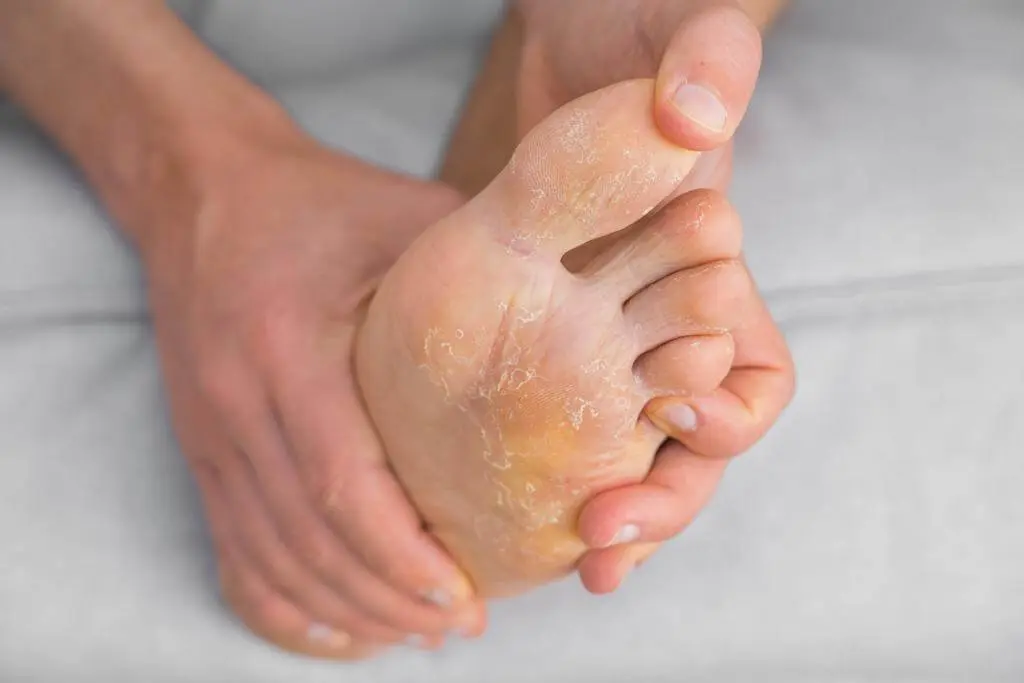
Nutritional Deficiencies
It’s important to note that some medical conditions may result from underlying health issues or nutritional deficiencies. For instance, certain nutritional deficiencies can lead to dry and scaly skin. In such cases, addressing the underlying deficiency through a balanced diet or supplements can improve overall skin health, including the skin on the feet.
Contacting a Healthcare Professional
If you suspect that a medical condition is causing your rough skin or if your symptoms are severe and persistent, it’s crucial to consult a healthcare professional for an accurate diagnosis and appropriate treatment. They may prescribe topical steroids or other medications to alleviate symptoms and help restore the skin’s barrier function.
Hot Water Usage: Is it Hurting Your Skin?
When it comes to caring for our skin, many of us underestimate the impact that hot water can have. While it may feel soothing and comforting to indulge in a hot shower or soak our feet in steaming water, excessive hot water usage can actually be detrimental to our skin health, particularly when it comes to roughness and dryness.
Hot water can strip our skin of its natural oils and disrupt its delicate balance. It can weaken the protective barrier that keeps our skin hydrated and smooth, leading to increased water loss and dryness. This is especially problematic for individuals with sensitive skin or pre-existing skin conditions such as atopic dermatitis or seborrheic dermatitis.
Disruptive to the Skin’s Barrier Function
By using hot water, we run the risk of disrupting the skin’s barrier function, leaving it more prone to irritation, itching, and flaking. Hot water can also exacerbate skin conditions like eczema or psoriasis, making the symptoms more severe and prolonged.
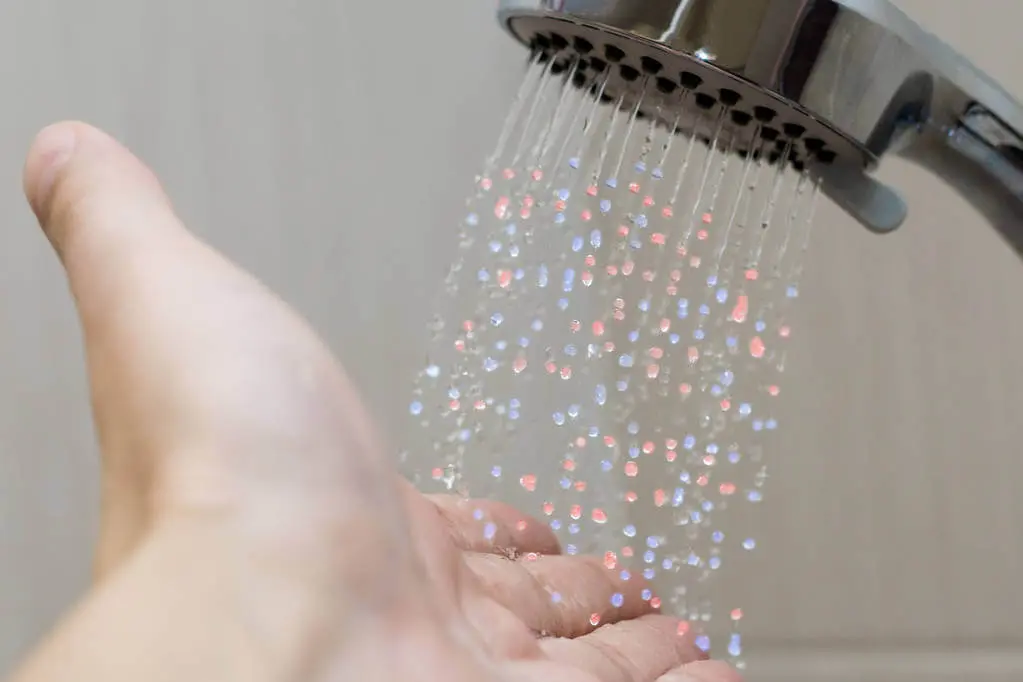
Build-up of Dead Skin Cells
Hot water can contribute to the build-up of dead skin cells on the surface of our skin, leading to roughness and a dull complexion. It can also strip away the skin’s natural moisturizing factors, causing further dryness and discomfort.
Mitigating the Effects
So, what can we do to mitigate the damaging effects of hot water on our skin? The first step is to adjust the temperature of our showers or baths. Instead of using steaming hot water, opt for lukewarm water. Lukewarm water is gentler on the skin and helps to preserve its natural oils and moisture.
Additionally, it’s important to limit the duration of our hot water exposure. Prolonged showers or baths can further dehydrate the skin and worsen dryness. Keep your bathing time to a minimum, ideally no more than 10-15 minutes.
After bathing, it’s essential to moisturize your skin immediately. Applying a hydrating moisturizer or lotion helps to replenish the lost moisture and reinforces the skin’s protective barrier. Look for products that contain natural moisturizers such as jojoba oil or coconut oil, which have anti-inflammatory properties and can soothe irritated skin.
Dead Skin Cells
Our skin naturally renews itself by shedding dead skin cells every day. Every day, our body sheds thousands of these cells to make way for newer, healthier skin cells. However, when dead skin cells accumulate on the surface of our skin, it can lead to a variety of skin issues, including roughness, dullness, and even clogged pores.
One of the main culprits behind the build-up of dead skin cells is dryness. When our skin lacks moisture, it becomes more prone to flaking and the accumulation of dead skin cells. This is why it’s important to keep our skin well-hydrated and moisturized.
Exfoliation
Exfoliation is another key step in removing dead skin cells and revealing smoother, healthier skin underneath. There are various methods of exfoliation, including mechanical exfoliation with tools like a brush or a foot file, or chemical exfoliation using products containing ingredients like salicylic acid, glycolic acid, or lactic acid. These products work by loosening the bonds between dead skin cells, allowing them to be sloughed off more easily.
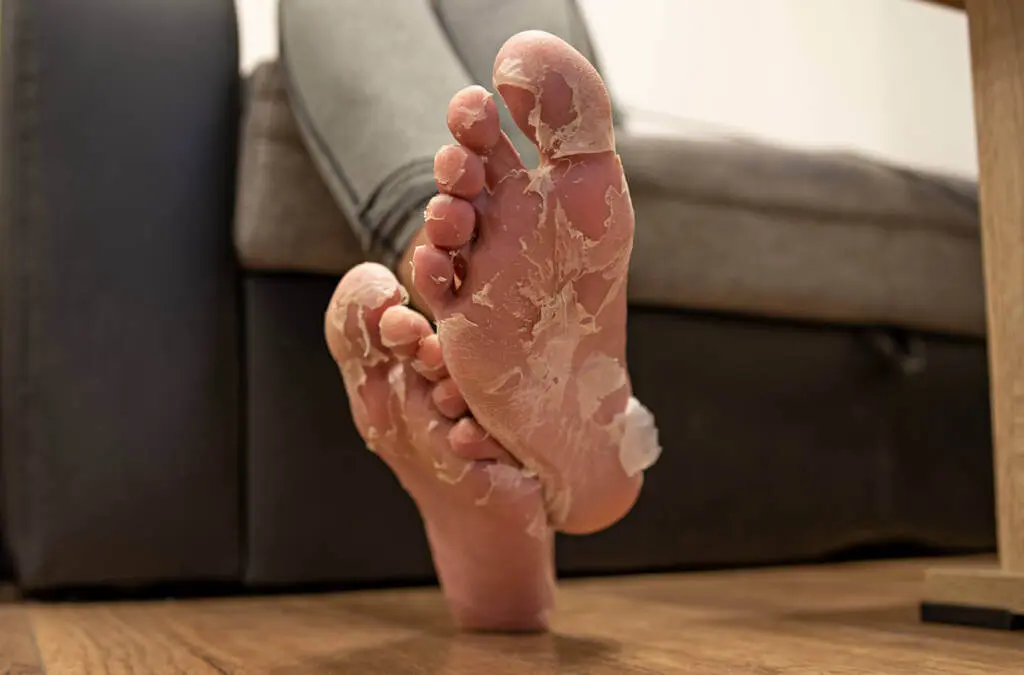
Regular exfoliation not only helps to remove dead skin cells but also promotes cell turnover, which can improve the overall appearance and texture of the skin. It can also enhance the efficacy of other skincare products, as they can penetrate deeper into the skin without the barrier of dead cells.
Be Careful Not to Over-exfoliate
However, it’s important to be mindful of not over-exfoliating, as this can actually damage the skin’s natural barrier and cause irritation. It’s recommended to exfoliate no more than two to three times a week, and to adjust the frequency based on your skin’s individual needs and sensitivity.
Fungal Infections
Fungal infections can be a common cause of rough and dry skin on the feet. These infections, also known as athlete’s foot or tinea pedis, are caused by a type of fungus that thrives in warm and moist environments. The feet, enclosed in shoes and socks for most of the day, provide the perfect breeding ground for these fungi.
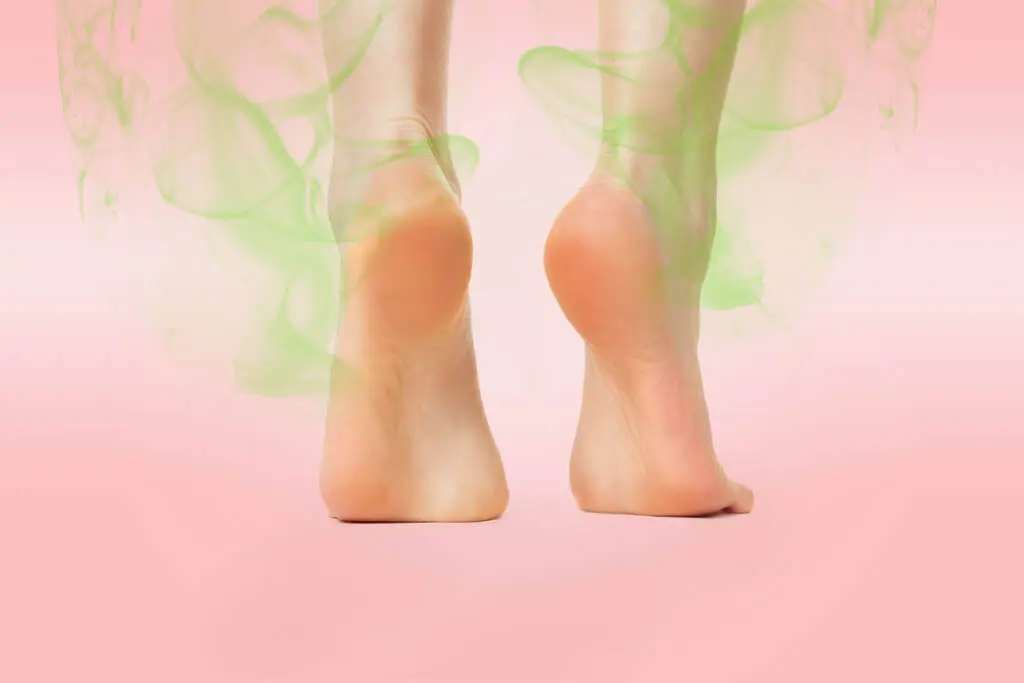
Symptoms of a fungal infection can include redness, itching, burning, and peeling of the skin. The affected area may also develop small blisters or cracks, particularly between the toes. If left untreated, the infection can spread to other parts of the foot or even to other individuals through direct contact.
Prevention and Treatment
To prevent and treat fungal infections, it’s important to practice good foot hygiene and keep the feet clean and dry. Regularly washing the feet with a mild soap and lukewarm water can help remove any sweat or dirt that may contribute to the growth of the fungus. After washing, make sure to thoroughly dry the feet, paying special attention to the spaces between the toes.
In addition, wearing breathable and moisture-wicking socks, such as those made from cotton or bamboo, can help keep the feet dry by absorbing excess sweat. It’s also beneficial to choose shoes that allow for proper ventilation, avoiding tight or non-breathable footwear whenever possible.
Natural remedies can also be effective in treating fungal infections and restoring the health of your feet. One such remedy is coconut oil, which has anti-fungal and anti-inflammatory properties. Applying coconut oil to the affected area can help soothe the itchiness and reduce inflammation.
Tea tree oil, known for its antifungal properties, can also be used topically to combat fungal infections. Dilute a few drops of tea tree oil with a carrier oil, such as jojoba oil, and apply it to the affected area.

If home remedies do not provide relief or if the infection persists or worsens, it’s important to consult a healthcare professional. They may recommend an over-the-counter antifungal cream or prescribe stronger medications, such as topical steroids or oral antifungal tablets, depending on the severity of the infection.
Remember, prevention is key when it comes to fungal infections. By maintaining good foot hygiene, wearing breathable footwear, and incorporating natural remedies into your foot care routine, you can keep rough and dry skin caused by fungal infections at bay and enjoy smooth and healthy feet.
Lack of Vitamin C Intake: A Potential Cause of Rough Skin
Vitamin C is an essential nutrient that plays a crucial role in maintaining overall health, including the health of our skin. However, many individuals may not be getting enough of this important vitamin in their diet, leading to various health concerns, including rough skin.
Powerful Antioxidant Properties
One of the main functions of Vitamin C is its powerful antioxidant properties. Antioxidants help protect our skin from damage caused by environmental factors, such as pollution and UV radiation.
When we don’t consume enough Vitamin C, our skin becomes more susceptible to oxidative stress, which can lead to the breakdown of collagen and elastin, resulting in rough and dull skin.
Collagen Production
Vitamin C also plays a vital role in the production of collagen, a protein that gives our skin its strength and elasticity. Collagen helps maintain the smooth texture and plumpness of our skin.
Without adequate Vitamin C intake, collagen synthesis can be impaired, leading to the weakening of the skin’s structural framework and the appearance of roughness and fine lines.
Wound Healing
Vitamin C is essential for wound healing. It aids in the formation of new blood vessels, which is crucial for delivering oxygen and nutrients to the skin tissues. Inadequate Vitamin C intake can slow down the healing process and contribute to the development of rough, dry patches on the skin.
Diet
To ensure you’re getting enough Vitamin C in your diet, incorporate a variety of fruits and vegetables into your meals. Citrus fruits like oranges, grapefruits, and lemons are rich sources of Vitamin C.
Other excellent dietary sources include strawberries, kiwis, bell peppers, and leafy greens like spinach and kale.

Consider including a Vitamin C supplement if your intake through diet alone is insufficient.
Beneficial for the Overall Health of Your Feet
It’s worth noting that Vitamin C is also beneficial for the overall health of your feet, particularly in maintaining the strength and health of the skin.
When our feet are constantly exposed to friction, pressure, and environmental factors, they can become dry, cracked, and rough.
Incorporating Vitamin C-rich foods and supplements into your diet can help nourish and protect the skin on your feet, promoting a smoother and healthier appearance.
Natural Remedies for Rough Skin
Many individuals struggle with dry, rough patches of skin that can make walking and wearing shoes uncomfortable. Fortunately, there are natural remedies that can help improve the condition of your rough skin and restore its smoothness.
Sunflower Seeds
Sunflower seeds are not just a delicious and nutritious snack; they also offer remarkable benefits for the health of your skin. Packed with essential nutrients and antioxidants, these tiny seeds can work wonders to improve the overall appearance and condition of your skin.
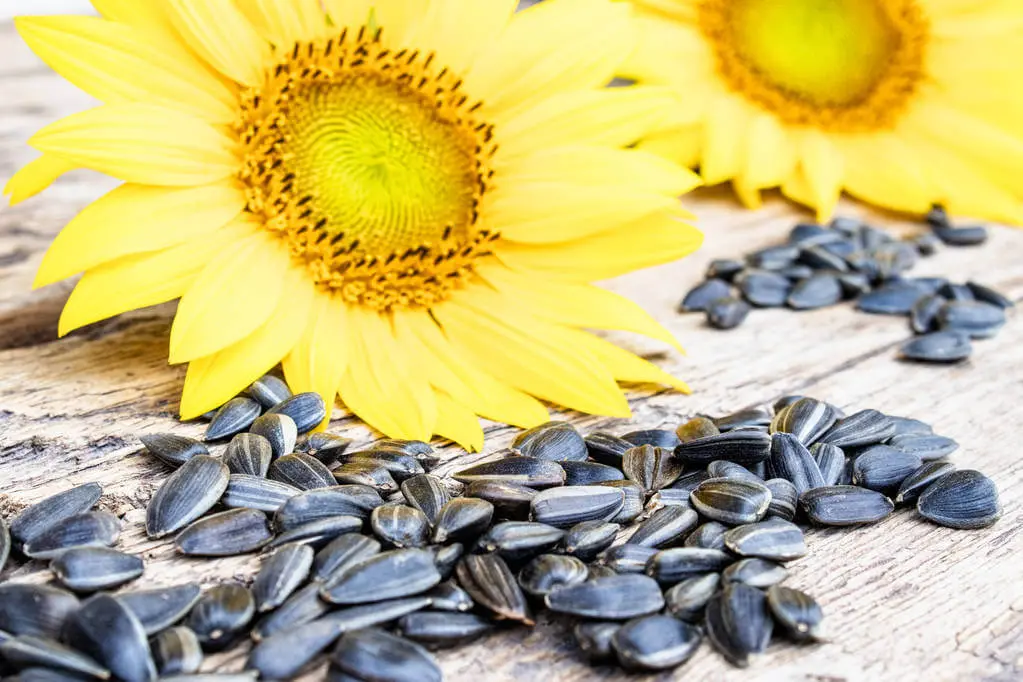
Vitamin E
One of the key nutrients found in sunflower seeds is Vitamin E. This potent antioxidant has been widely recognized for its skin-healing properties. By neutralizing free radicals and reducing oxidative stress, Vitamin E helps to protect the skin from damage caused by environmental factors, such as UV rays and pollution.
Vitamin E is also known for its ability to deeply hydrate the skin. It helps to improve skin’s moisture levels by strengthening the skin barrier function, preventing water loss, and promoting skin hydration. This can be especially beneficial for rough and dry skin, as it helps to restore moisture and nourishment to the skin.
Essential Fatty Acids
Another benefit of sunflower seeds for the skin is their high content of essential fatty acids. These healthy fats, including omega-6 fatty acids, play a vital role in maintaining the health and integrity of the skin. They support the formation of a protective barrier on the skin, which helps to lock in moisture and keep the skin soft and supple.
Antioxidants
The antioxidants present in sunflower seeds also contribute to healthier skin. These antioxidants help to fight inflammation and protect the skin against damage caused by free radicals. By reducing inflammation, sunflower seeds can help soothe irritated skin and alleviate conditions like atopic dermatitis or seborrheic dermatitis.
Zinc and Selenium
Sunflower seeds are a dietary source of other skin-friendly nutrients, such as zinc and selenium. These minerals play a crucial role in supporting collagen production, which is essential for maintaining the elasticity and youthfulness of the skin. They also help to promote skin cell renewal, resulting in a brighter and more radiant complexion.
Incorporate Sunflower Seeds Into Your Skincare Routine
To incorporate sunflower seeds into your skincare routine, consider adding them to your diet or taking a Vitamin E supplement. You can enjoy them as a tasty snack on their own, sprinkle them over salads or cereals, or blend them into smoothies for an extra nutritional boost.
By including sunflower seeds in your daily routine, you can nourish your skin from the inside out and achieve a healthier, more vibrant complexion.
Remember, while sunflower seeds offer numerous benefits for the skin, it’s essential to maintain a well-rounded skincare routine and practice good overall skin care habits. This includes regularly cleansing and moisturizing your skin, protecting it from harmful UV rays, and seeking professional advice if you have any specific skin concerns or conditions.
Coconut Oil
Coconut oil is a popular natural remedy for various skin concerns, including rough and dry skin. With its rich moisturizing properties, this versatile oil can help nourish and hydrate your skin, leaving it feeling smooth and supple.

Moisturizing Benefits
One of the main reasons coconut oil is beneficial for rough skin is its ability to lock in moisture. The oil contains high levels of fatty acids, such as lauric acid, which penetrate deep into the skin and provide long-lasting hydration. This is especially beneficial for individuals with skin conditions like eczema or psoriasis, who often experience excessive dryness and flakiness.
Anti-inflammatory
Aside from its moisturizing benefits, coconut oil also possesses anti-inflammatory properties. This means it can help soothe irritated skin and reduce redness and inflammation. Individuals with conditions like atopic dermatitis or seborrheic dermatitis can benefit from using coconut oil as a natural and gentle way to calm their skin.
Promotes Skin Cell Regeneration
Another advantage of coconut oil is its ability to promote skin cell regeneration. The oil contains vitamins E and K, which are essential for maintaining healthy skin. Vitamin E acts as an antioxidant, protecting the skin from free radicals and environmental damage, while vitamin K helps to heal wounds and fade scars. By incorporating coconut oil into your skincare routine, you can boost the rejuvenation process and improve the overall appearance of your skin.
Treats Cracked Heels
Using coconut oil on your rough feet can also be beneficial for treating cracked heels. The oil acts as a natural moisturizer, softening the dry and calloused skin on your heels and promoting healing.
To maximize its effects, apply a generous amount of coconut oil to your feet before bed, put on a pair of cotton socks, and let the oil work its magic overnight. You’ll wake up to noticeably smoother feet in the morning.
When selecting coconut oil for skincare purposes, opt for organic, virgin coconut oil. This type of oil is minimally processed, ensuring that it retains its maximum benefits. Avoid refined coconut oil, as it may contain additional chemicals or additives that could irritate your skin.
Sensitive Skin
While coconut oil offers numerous benefits for rough skin, it’s important to note that everyone’s skin is unique. If you have sensitive skin or are prone to allergies, it’s a good idea to do a patch test before applying coconut oil all over your body.
Additionally, if you have any underlying skin conditions or are taking medication, it’s best to consult with a dermatologist or healthcare professional before incorporating coconut oil into your skincare routine.
Foot Scrubbing with Sea Salt and Olive Oil
One natural remedy that can help rejuvenate rough feet is foot scrubbing with sea salt and olive oil. This simple yet effective technique can be easily incorporated into your regular skincare routine to promote soft and smooth feet.
Sea Salt Has Exfoliating Properties
Sea salt is known for its exfoliating properties. When used as a scrub, it helps to gently slough away dead skin cells, revealing the healthier and softer layers of skin underneath. The coarse texture of sea salt provides a thorough exfoliation, making it particularly beneficial for rough and calloused areas on your feet.
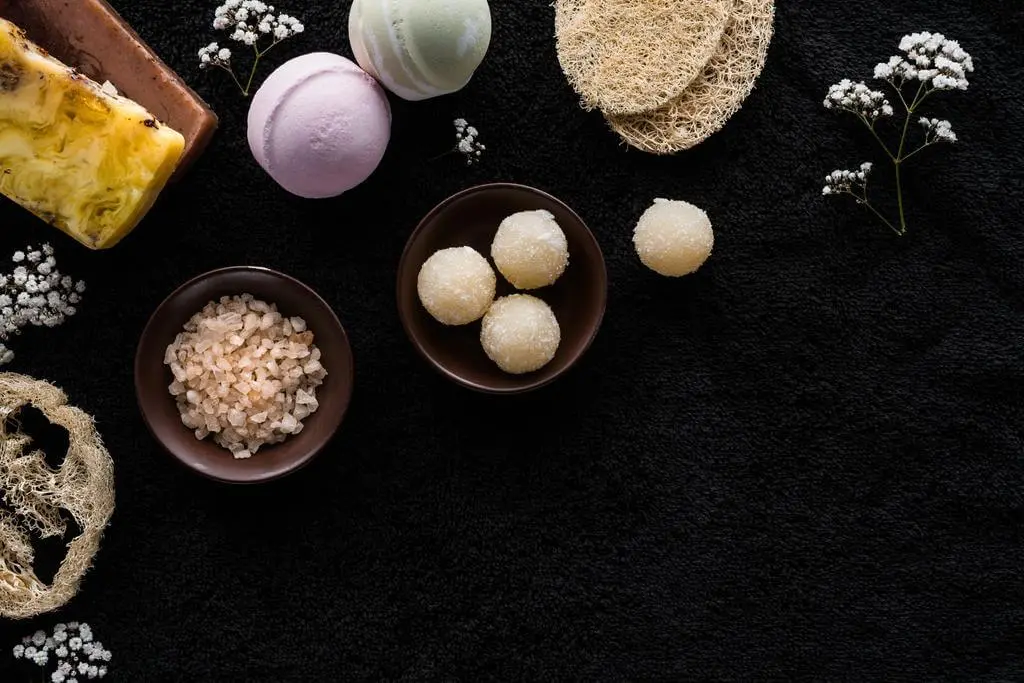
Olive Oil Is a Natural Moisturizer
Olive oil, on the other hand, serves as a natural moisturizer. It is rich in antioxidants, including vitamin E, which help to nourish and hydrate the skin. Olive oil also contains fatty acids that penetrate deep into the skin, providing long-lasting moisture and promoting skin elasticity. By combining sea salt and olive oil, you can effectively exfoliate and hydrate your feet at the same time.
Prepare a Sea Salt and Olive Foot Scrub
To create a sea salt and olive oil foot scrub, simply mix equal parts sea salt and olive oil in a small bowl. You can customize the amount based on your preferences and the size of the area you want to scrub.
Gently massage the mixture onto your feet using circular motions, focusing on rough and dry areas. Be sure to give extra attention to your heels, where dead skin tends to accumulate.
Allow the scrub to sit on your feet for a few minutes to allow the salt and oil to work their magic. This will further exfoliate and moisturize your feet. Afterward, rinse off the mixture with lukewarm water and pat your feet dry with a soft towel.
For optimal results, it is recommended to use a foot scrub with sea salt and olive oil once or twice a week. This will help maintain the smoothness and softness of your feet. After each scrubbing session, remember to apply a moisturizer or foot cream to lock in the hydration and further enhance the results.
In addition to improving the appearance of rough feet, foot scrubbing with sea salt and olive oil can also provide a rejuvenating and relaxing experience. Take the time to pamper yourself, perhaps by soaking your feet in warm water beforehand or by adding a few drops of essential oils to the scrub mixture to create a therapeutic scent.
Overall
Overall, foot scrubbing with sea salt and olive oil is a natural and effective way to treat rough feet. By incorporating this exfoliating and moisturizing technique into your skincare routine, you can enjoy smoother and healthier feet that are ready to take on the world.
Using Oatmeal Baths or Masks to Create a Protective Barrier
One effective remedy for rough and dry skin is using oatmeal baths or masks to create a protective barrier on the skin.
Oatmeal is a natural ingredient that has been used for centuries to soothe and heal various skin conditions. It is packed with antioxidants and anti-inflammatory properties that can help reduce irritation and inflammation. When applied to the skin, oatmeal forms a protective barrier that locks in moisture and prevents further dryness.
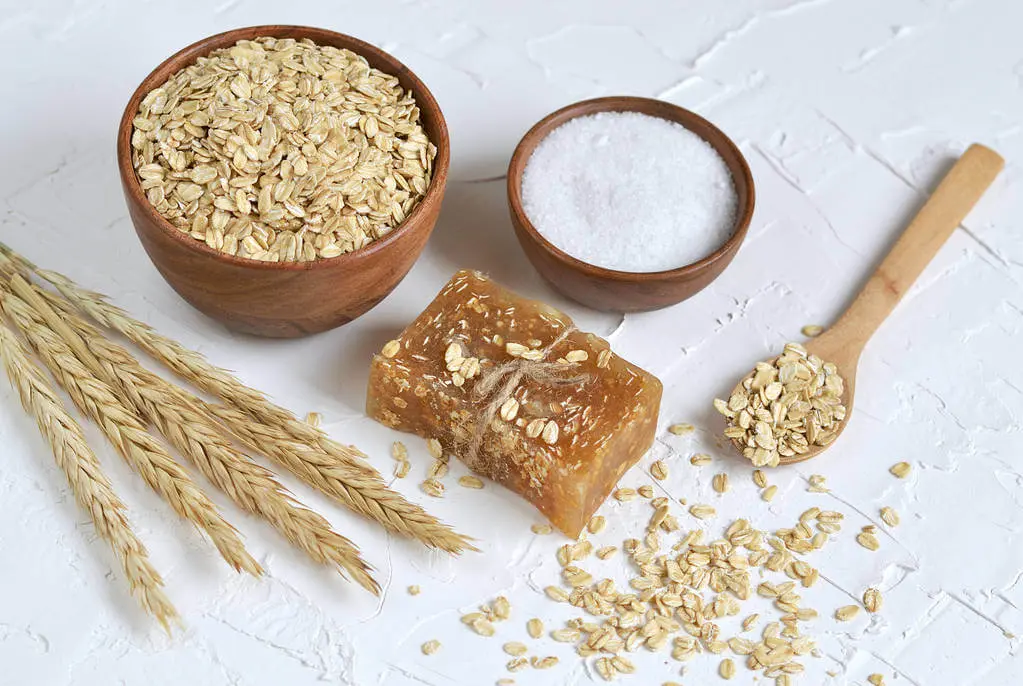
Prepare an Oatmeal Bath
To create an oatmeal bath, you can start by grinding about one cup of plain oats into a fine powder using a blender or food processor.
Fill your bathtub with lukewarm water and add the oatmeal powder to it. Swirl the water around to ensure that the oatmeal is evenly distributed.
Soak your feet in the oatmeal bath for 15-20 minutes, allowing the soothing properties of oatmeal to work their magic. Gently pat your feet dry with a towel, avoiding rubbing, which can further irritate the skin.
Alternatively, you can make an oatmeal mask by mixing a small amount of oatmeal with warm water to form a thick paste. Apply the mask to your feet, focusing on the rough and dry areas. Leave it on for 15-20 minutes, allowing the oatmeal to create a protective barrier on your skin. Rinse off the mask with lukewarm water and pat your feet dry.
The Benefits
Using oatmeal baths or masks on a regular basis can help improve the condition of rough and dry skin on your feet. The protective barrier created by oatmeal not only locks in moisture but also helps to prevent irritants from entering the skin, such as bacteria or allergens.
In addition to creating a protective barrier, oatmeal also has soothing properties that can relieve itchiness and reduce redness. This makes it an excellent remedy for conditions such as atopic dermatitis or seborrheic dermatitis, which are characterized by irritated and inflamed skin.
Check for Allergies First
It’s important to note that oatmeal baths or masks may not be suitable for everyone, especially those with allergies. If you’re unsure about using oatmeal on your feet, it’s best to patch test a small area of skin first to check for any adverse reactions.
To enhance the effectiveness of oatmeal treatments, you can also consider incorporating other natural moisturizers, such as coconut oil or jojoba oil, into your routine. These oils have nourishing properties that can help further hydrate and repair your skin.
Creating a Protective Barrier with Oatmeal
Remember, taking care of your feet goes beyond just appearance. By creating a protective barrier with oatmeal, you can not only improve the health and smoothness of your skin but also prevent future dryness and discomfort. Give oatmeal baths or masks a try and experience the benefits for yourself. Your feet will thank you!


